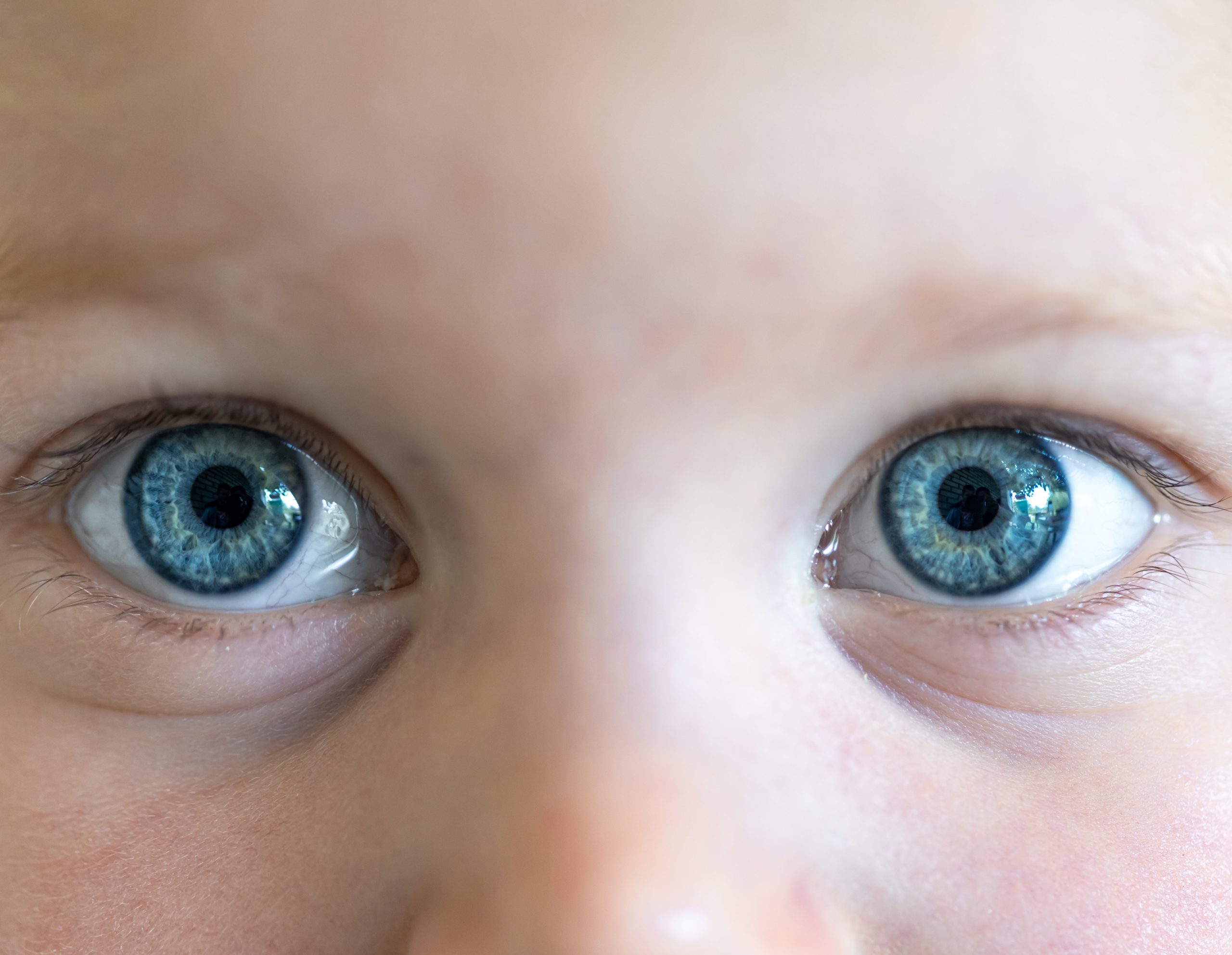X-linked retinopathies represent a group of hereditary retinal diseases, which are an important cause of blindness in the children. As a heterogeneous group of diseases, the pathogenetic mechanisms underlying these diseases may also differ. However, X-linked retinopathies are usually caused by genetic mutations that result in a loss of function of certain proteins and, for this reason, represent an excellent target for gene therapy strategies.
Many X-linked retinopathies are passed on to their offspring by healthy carrier mothers (i.e. who do not develop the disease, but can transmit it) and this, over time, has helped doctors to learn more and more about how these diseases are inherited.
Recently published data from the Center for Hereditary Retinal Degenerations at the University of Pennsylvania found a genetic basis in 52% of patients with retinopathy, and of these, 17% had X-chromosome-related retinopathy.

X-chromosome-related inheritance and the genetic mode of transmission of retinopathies
Diseases caused by sequence variations in genes on the X chromosome are known as 'X-linked' diseases.
The X and Y chromosomes are called sex chromosomes because they determine the sex of the unborn child (XX for women and XY for men). The X chromosome contains about 1000 genes, compared to about 70 on the Y chromosome. To balance this large difference, one of the two X chromosomes, in women, undergoes a phenomenon called 'inactivation'. This is a physiological process that causes the random silencing of one of the two X chromosomes, whose genes are consequently not expressed.
Some of the X chromosome-related genes that have been identified as causes of retinal diseases, such as the RPGR, RP2 e CACNA1F (associated with retinitis pigmentosa and other retinopathies) all undergo complete inactivation.
Certain genes linked to the development of retinopathies
As mentioned, there are many forms of retinopathies linked to mutations or inactivation of genes on the X chromosome. Among these, some of the most frequent are linked to the following genes:
- RPGR
RPGR (retinitis pigmentosa GTPase regulator) was the first gene identified as the cause of X-chromosome-related retinitis pigmentosa.
The mutations of RPGR are responsible for several types of disease, including rod-cone dystrophy (70%), rod-cone dystrophy (6-23%) and cone dystrophy (7%).
Retinitis pigmentosa (RP) shows X-chromosome-related inheritance in 8-16% patients with a prevalence of affected males of approximately 1:15,000-1:26,000. The gene RPGR is responsible for more than 70% of these cases. X-linked RP tends to have a more severe phenotype and often occurs during childhood (on average at 5 years of age).
- RP2
The retinitis pigmentosa gene RP2 was the second gene identified as the cause of X-linked RP. Mutations in this gene are responsible for approximately 10-20% of cases of X-linked RP. Patients show typical features of RP, including night blindness, constriction of the visual field and subsequent reduction in visual acuity.
- CHM
Gene variants CHM are responsible for chorioretinal degeneration in choroideremia.
Choroideremia affects 1:50,000 to 1:100,000 people, with a high prevalence in Finland. Males develop symptoms of nictalopia in the first decade of life, followed by progressive visual field constriction. It has also been reported that patients with choroideremia have a generalised reduction in colour vision, evident from the very beginning of the disease. Choroideremia is usually an isolated retinal disease, but syndromic associations have also been observed. In these cases the disease is associated with hearing loss, cognitive impairment, cleft lip and palate, skeletal deformities, and acrokeratosis.
- RS1
X-linked retinoschisis is a condition that affects approximately 1:15000-1:30,000 male individuals, who typically present with symptoms of reduced central vision at school age, strabismus or anisometropia. The prognosis is often relatively good in childhood, unless retinal detachment or vitreous haemorrhage occurs, which are associated with a poor prognosis. Approximately 50% of patients also have peripheral retinal changes. A subgroup of patients presents with bullous retinoschisis, which tends to present in childhood with strabismus, significant reduction in vision, nystagmus, flying flies secondary to vitreous haemorrhage or irregularly shaped pupils.
Experimental gene therapies
A number of new therapies for retinopathies are currently in clinical trials and are likely to be further developed in the coming years. Therapeutic approaches can be classified into two types: those that aim to slow the rate of degeneration and minimise the loss of visual function, and those that aim to restore visual function in end-stage disease.
Gene therapy is the most advanced therapeutic approach for variants causing loss of function, and an authorised gene replacement treatment is already available for autosomal recessive disease associated with the gene RPE65.
Other methods are in various stages of development and have not yet been applied to X-chromosome-related retinopathies, but seem promising. These include antisense oligonucleotides (which are small molecules that alter RNA expression), gene editing (e.g. the recently developed CRISPR/cas-9 technique) and RNA editing.
Other approaches include local or systemic drugs aimed at improving cell survival.
Bibliography
Dr. Carmelo Chines
Direttore responsabile
